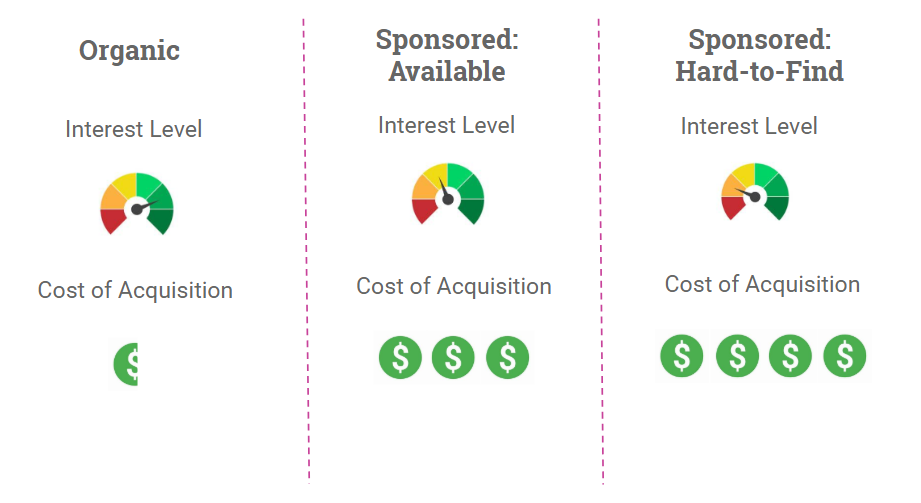Recruitment metrics are vital to the efficient staffing of your company. Like with sales and marketing data, recruitment metrics can tell you what is working and what isn’t, how to adjust your recruitment strategy to find more qualified candidates, and how to appropriately spend your hiring budget.
However, it’s not always easy to parse actionable information from the available data. What is actually important? Further, what do those numbers mean? And how do you take those numbers and translate them into policy that will improve your staffing and retention?

Determining Which Recruitment Metrics Matter
To start, it’s important to understand the kind of data you’ll be looking at and how to read it. But even more than that, you have to identify your goals.
So what are your specific goals? As recruitment professionals, we can assume that your primary goal will be to hire qualified candidates that will help your company meet its objectives and do so within a specified budget. However, it’s crucial that you become specific, outlining how many people you’re looking to hire over what time period and for what price.
Obviously, this will be a constantly shifting metric as jobs become available and are filled, so be willing to make them flexible, but they should also be explicit. You can always break down your goals into smaller pieces to more accurately reflect where people are in the process and identify pain points.
Once you’ve identified your goals, you can start exploring the metrics available to you and see which ones speak to those targets.
Remember: your key performance indicators can change over time and based on the needs of the company, so don’t get too attached to any specific numbers. However, you should have access to a wide range of specific data to work with and refine your approach.
You can get access to all of the metrics you need with Talentify. Schedule a free demo today.
Types of Metrics
One of the easiest ways to break down your metrics is to think of them in terms of two broad categories: Quality and Quantity.
In this case, quality metrics refer to how effective your efforts are. They aren’t necessarily a measure of how good the candidates you’re reaching are, but rather how frequently those candidates convert into members of the staff.
 Quantity metrics, on the other hand, refer to the amount of activity that you generate through your efforts. This can measure the sheer volume of candidates, interviews, or spend, just to name few key data points. Conversions can also be a quantity measure, depending on how you’re using it.
Quantity metrics, on the other hand, refer to the amount of activity that you generate through your efforts. This can measure the sheer volume of candidates, interviews, or spend, just to name few key data points. Conversions can also be a quantity measure, depending on how you’re using it.
Of course, these metrics rely on one another to generate meaning. For example, conversions make more sense in context of the spend that it took to get there. When developing goals, combine one quality-based and one quantity-based metric to create effective targets.
Keep in mind, also, that quantity metrics are a lot easier to control than quality metrics. It’s easy for a recruiter to increase the number of InMails they send on LinkedIn, but it’s a lot more difficult to improve the response rate because the ultimate decision maker is not the recruiter. That’s why data and A/B testing of message, benefits, and platform are crucial elements of your recruitment strategy.
The Three Columns
A fairly easy way to visualize the costs of recruitment is to think in terms of three columns or categories of job marketing.

The first column represents organic traffic. This is, by far, the most desirable area because the candidates you’re dealing with are actively searching you out in some way. Whether they are looking for positions on a job board or using a service like Facebook Careers/Google for Jobs, they have the highest level of interest and cost the least amount of money.
Next, you have sponsored advertising for available labor. This is going to be more costly and have a smaller amount of interest. Part of this is that when it comes to sponsored content, you’re competing with other companies. Frequently, the platforms that allow you to do this will allow candidates to apply to multiple jobs easily, or even at once. Grabbing their attention becomes more difficult and more important.
Finally, the third column is sponsored content for hard-to-find candidates. Keep in mind, this can vary from region to region. For example, security guards in LA are in high demand, and companies are having to struggle to fill open positions in the field. It could cost a lot to get a new guard, let alone assemble a team or find a manager with the kind of experience you’re looking for.
What this visualization does, other than give an easy way of breaking down the real costs of recruitment, is help you prioritize your spending. If you can fill the majority of your positions with cheap, organic sources, then you will have more money to compete for those low-interest, hard to find candidates with lots of options.
Frequently, the problem with recruiting is not that you’re not spending enough money, it’s that you’re not spending your money wisely.
Specific Recruitment Metrics You Should Be Paying Attention To
While there are a number of things that could be important to your company or your specific situation, here are three specific metrics that will change the way you do recruiting.
Placements per Hire - How many ads did you have to place in order to hire somebody for that specific position? A refinement of that also takes into account how much you had to spend on sponsored ads as compared to organic results.
Placements per hire = total placements / total hires
Average Time to Fill - This can be calculated by taking the total days to fill all jobs divided by the total number of jobs. This is vital to your recruitment strategy because the longer it takes to fill a job, the more likely that the candidate will go with another company. If you’re having trouble hiring, see if you’re taking too long to process candidates. Rapid candidate engagement is an integral part of this.
Average time to fill = Total days to fill for all jobs / Total number of jobs
Response Rate - After reaching out to qualified candidates, how many of them respond? How many make it to different stages of the hiring process? Response rate is expressed as a percent and is the total responses divided by the total outreach attempts times 100. If you find that you’re losing candidates in the initial steps, or that they are taking other offers, you can pinpoint where in the process things are falling apart and address the problem.
Response rate = (total responses / total outreach attempts) X 100
While these are hardly the be-all, end-all of recruitment metrics, they are solid data to start with that will help you to adjust your approach to get more, better employees in those hard to fill jobs.
Collecting the Right Data
Ultimately, you can’t make smart, analytics-driven decisions without the right data. The Talentify  platform can help you to collect the exact data you need to help better understand the landscape that you’re playing on and connect with the candidates that you need.
platform can help you to collect the exact data you need to help better understand the landscape that you’re playing on and connect with the candidates that you need.
If you’re trying to do this on your own, take the time to map out exactly what you need to know and have systems put in place to ensure that you’re getting the right information to guide your recruitment strategy. Review this monthly to make adjustments until everything is in place to ensure that smart choices based on accurate recruitment metrics.




SUBMIT YOUR COMMENT